#chinese historical clothing
Note
what’s a 襦 in hanfu, someone told me it’s a part of hanfu but I can’t find what it is exactly?
Hi. It had taken awhile and I did try… but my classical Chinese is rather terrible.
Long story short, 襦/rú originally means tops that are between waist and knee long. There were many types of ru, and could be lined or unlined. Usually it was worn underneath 袍/páo (robe, reaching the feet). Much, much later 长襦/cháng rú could also mean pao. Before that chang ru meant those that reached a person’s knee. The used of ru as an everyday word slowly fallen out of use in Tang Dynasty. By Song dynasty, short tops were usually referred as 衫/shān (unlined) or 袄/Ǎo (lined).
In the beginning of hanfu movement, 襦 as used as its original dictionary meaning – a short top that is not longer than knee. Hence, we had 齐腰襦裙/qíyāo rú qún and 齐胸襦裙/Qíxiōng rú qún. Later people decided collectively to be more specific and respected the change of meaning in words in history, and so ru is now (2022) specifically referred to those top with a separate waist attachment. Whether ru actually must have a separate waist piece is still debatable.
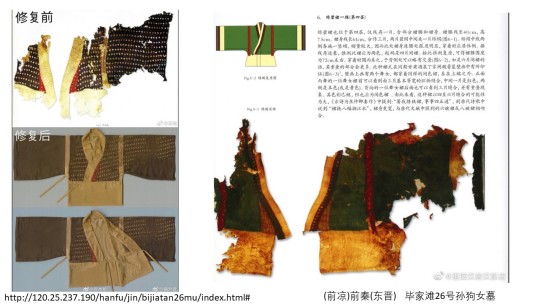
This couple are usually the more well-known example of ru.
There is another type of ru with half-round collar - those were probably replaced by the circular-collar in Tang dynasty.

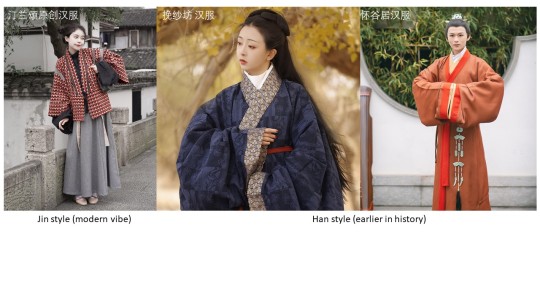
Reference
北大藏秦简《制衣》简介
北大藏秦简《制衣》释文注释
北大藏秦简《制衣》所见上衣服类相关问题探讨
释读秦简《制衣》兼论汉服的襦不是必须加腰襕
汉裁|形制:“长襦”指及膝以上的上衣
新疆营盘M15所出冥衣
把“袍”和“长襦”划等号
讀到一段關於襦的文字
唐代的襦、半臂与(衤雨)裆考
55 notes
·
View notes
Text
[Hanfu · 漢服]Chinese Warring States period(475–221 BC) Chu (state) Hanfu Based On Chu (state) lacquer figure



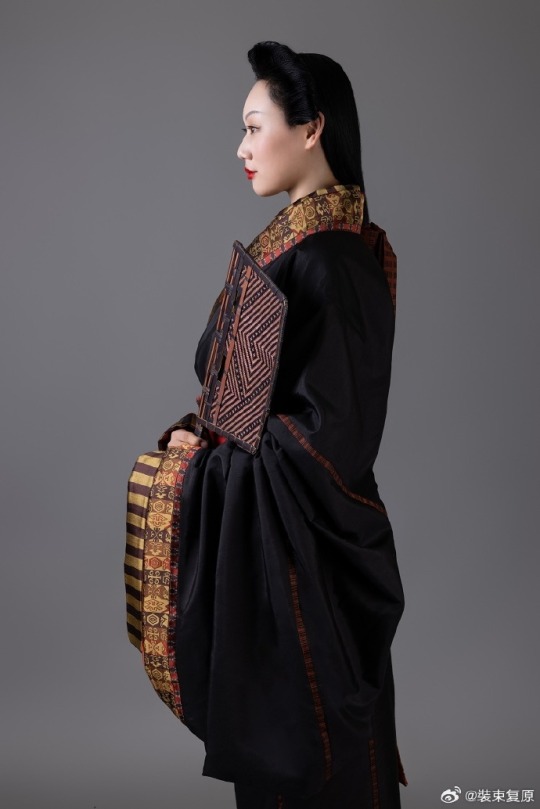
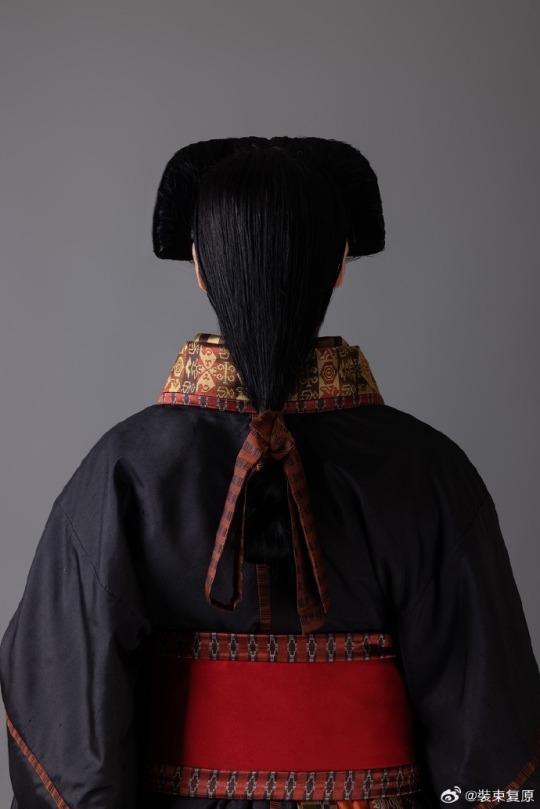
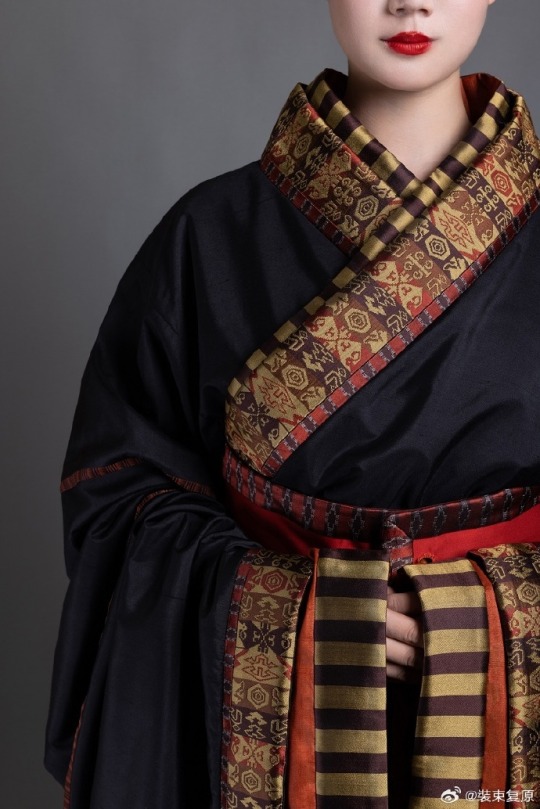
【Historical Artifact Reference】:
Lacquered wood figurines unearthed from Chu State Tomb in Shayang Tumbun Chu Tombs/沙洋塌冢楚墓出土漆俑

Collar cloth and robe unearthed from china Mashan Chu Tomb N19
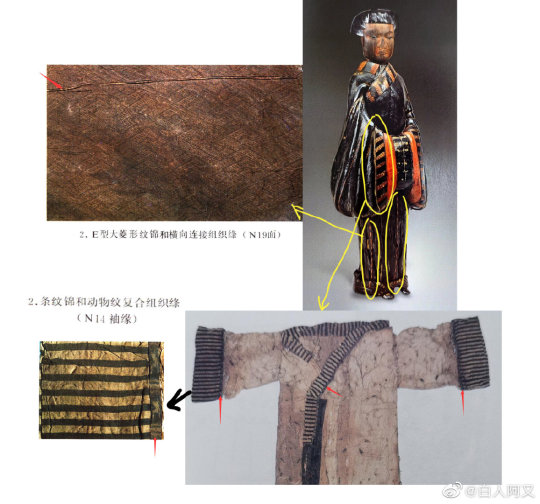
【Histoty Note】Warring States Period·Chu (state) Noble Women Fashion
Many people may wonder why this set of clothing and hairstyles are so similar to Japan, but the fact is this kind of clothing and hairstyle existed in China at least 1,000 years earlier than Japan.
During the China Warring States Period, it was popular for aristocratic men and women to wear robes.
Lacquered wood figurines and robe with similar images have been unearthed from the Shayang Tumbun Chu Tombs and the Chu Tombs at Mashan, many of which adopted the "three-dimensional structure" technique.
For example, a roughly rectangular piece is caulked at the intersection of the robe's sides, skirt sides and sleeve armpits. At the same time, the lower edge line of the top and the upper edge line of the lower skirt are incrementally extended, and then sewn into one body. It is called "Ming three-dimensional structure".
Its ingenuity is that while the outer contour of the garment remains unchanged, it effectively expands the inner space of the garment body, making it convenient for people to wrap the garment from the front to the back when wearing it, without damaging the original collar and garment forms.
The attire of aristocratic women from the Chu state in this set was restored based on the lacquered wooden figurines of the Chu tomb in Shayang. Their foreheads and temples hair are fluffy, and they have a hanging bun at the back of their heads. They wear robes that are connected up and down, and are decorated with brocade inlays at the seams.
The wearing method is the "layering method", two robes are stacked together in advance and then worn as a whole. This allows the collar edge of the lining to be show parallel to the collar edge of the outer garment, and a section of the lining to be show behind the lapel.The brocade edge is decorated with a wide belt and fixed with double belt hooks.
This "layered" wearing method shows the layers and details of Chu people's clothing, and can also show the graceful beauty of the body.
In addition, many creative clothing styles and fabric patterns emerged during the Spring and Autumn Period and the Warring States Period, bringing with them the unique atmosphere, mysterious imagination and ultimate romance of that era, becoming our inexhaustible source of art.
--------
Recreation Work by : @裝束复原
Weibo 🔗:https://weibo.com/1656910125/NhBx1oi5n
--------
#chinese hanfu#Warring States period(475–221 BC)#Chu(State)1030 BCE – 223 BCE#hanfu#hanfu accessories#hanfu_challenge#chinese traditional clothing#china#chinese#hanfu history#hanfu fashion#imperial china#chinese culture#chinese style#historical fashion#Hanfu From China#漢服#汉服#楚国
634 notes
·
View notes
Text
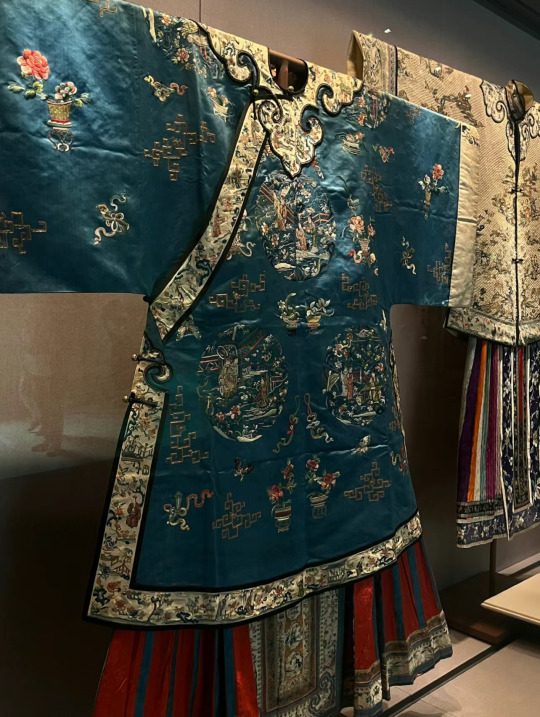
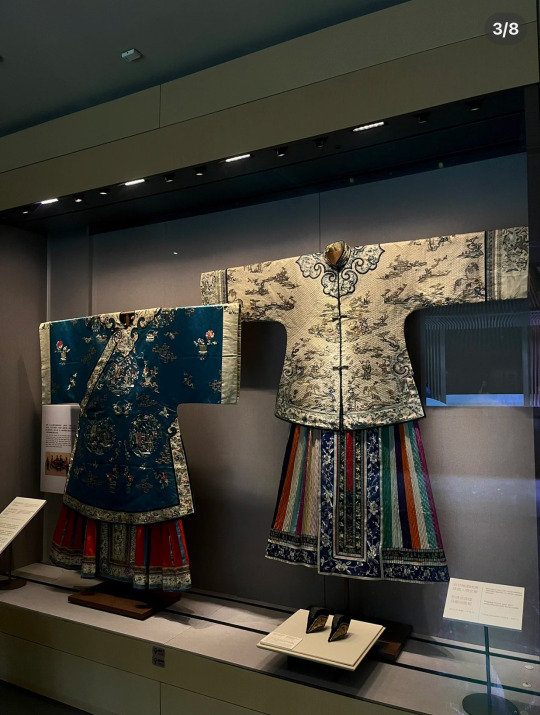
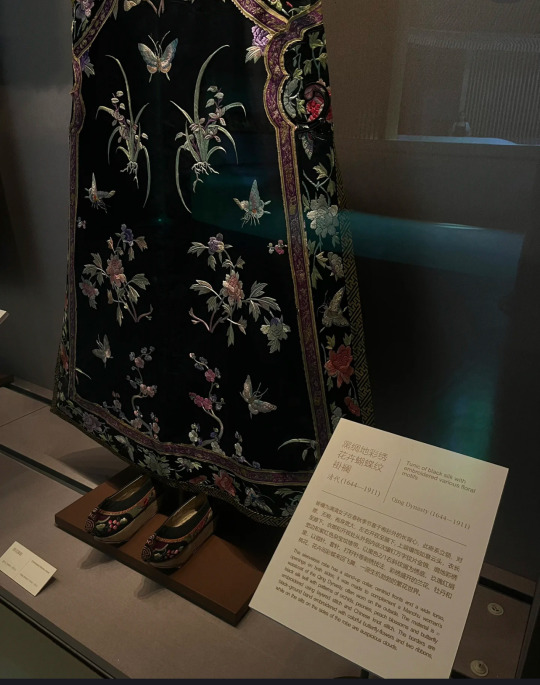
Qing Dynasty hanfu (1644-1912) Silk Museum of HangZhou (杭州丝调博物馆)
#china#chinese history#history#qing dynasty#education#language#archaeology#etymology#hangzhou#qing#artifacts#historical#historical clothing
206 notes
·
View notes
Text

Fooduary Day 10: Dragon's Beard Candy
Happy Lunar New Year!!! This one probably doesn’t seem very obvious but a white-candy version would be terribly unlucky!! (And I need all the luck I can get). So I tried to make the lantern slightly reminiscent of the treat while the character is styled in Han Dynasty fashion. According to the legend-history of dragon’s beard candy it was invented in the Han Dynasty (202 BCE 220 CE) which makes it our oldest dessert yet! And yeah, I went off script for this one. Day 10 was supposed to be Cinnamon rolls but I’m moving some stuff around because I so rarely get the chance to post something to celebrate.
I am the artist! Do not post without permission & credit! Thank you! Come visit me over on: instagram, tiktok or check out my coloring book available now \ („• ֊ •„) /
https://linktr.ee/ellen.artistic
#dragon's beard candy#han dynasty clothing#fooduary#art challenge#historical fashion#ellenart#lnart#character design#digital illustration#historically inspired#fooduary2024#dragons beard#hanfu#happy CNY#happy lunar new year#year of the dragon#chinese new year
355 notes
·
View notes
Text
#Caturday:
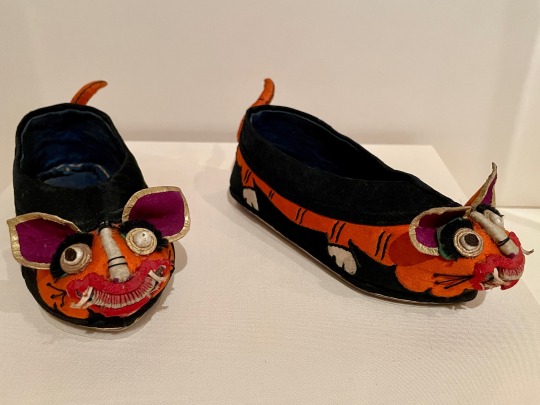
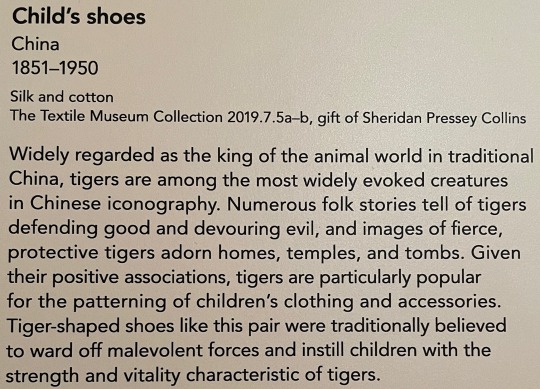
Child's pair of tiger-shaped shoes
China, 1851-1950, silk & cotton
On display at the George Washington University Textile Museum's new animal-themed textiles exhibition!
“Widely regarded as the king of the animal world in traditional China, tigers are among the most widely evoked creatures in Chinese iconography. Numerous folk stories tell of tigers defending good and devouring evil, and images of fierce, protective tigers adorn homes, temples, and tombs. Given their positive associations, tigers are particularly popular for the patterning of children's clothing and accessories. Tiger-shaped shoes like this pair were traditionally believed to ward off malevolent forces and instill children with the strength and vitality characteristic of tigers.”
#animals in art#tiger#feline#Caturday#museum visit#exhibition#George Washington University Textile Museum#shoes#clothing#historical costume#textiles#Chinese art#East Asian art#Asian art
308 notes
·
View notes
Text



I will continue to draw my HxH hanfu/historical Chinese AU until I'm old and wrinkly and can't draw anymore
#hxh#killua#hunterxhunter#killua zoldyck#gon#fanart#anime#animeart#digitalart#sketch#hxhfanart#killugon#killugonfanart#hanfu#hanfuart#chinese clothing#historical au#gon freecs#gon x killua
144 notes
·
View notes
Text
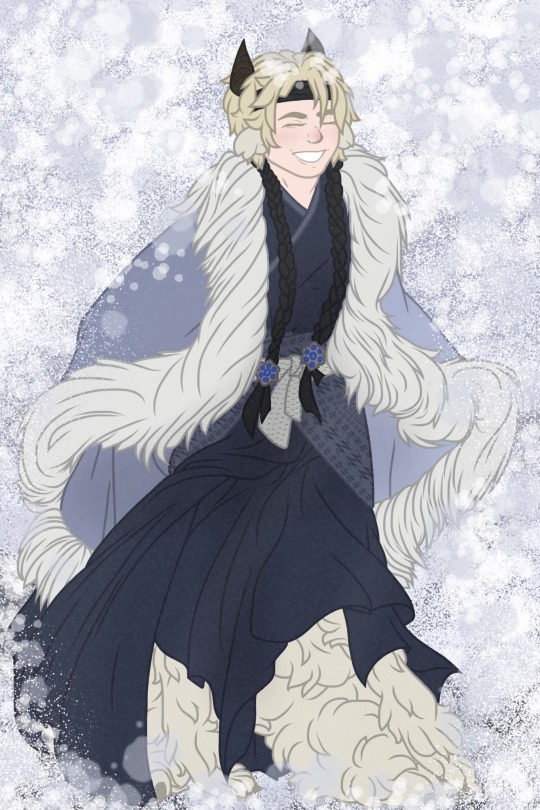
Some more of New Life Martyn living his best life in the snow! Vaguely based off hanfu as I really enjoyed the last time I studied the fashion.
#martyn inthelittlewood#itlw#itlwart#new life martyn#new life smp#nlsmp fanart#I finally think I’ve beat the art block#last post I had to beat with a stick till I got it done lol#this one I started at the base for for about a month#and then it finally just went#so happy#I managed to finish it in one day after trying for so long to get started#now let’s see if I can get that Pirates SMP one started lol#oh btw#I tried to look up exactly the time period the clothing reference was from#but I discovered it was actually from a Chinese historical drama#and they provided no date#so thus why it’s vaguely inspired haha
99 notes
·
View notes
Video
youtube
Chinese Hats and Headwear in the Three Kingdoms 1994 and its history
One of our contributors @csarracenian has subtitled another educational video about the history of various hats and headwear in the 1994 Romance of the Three Kingdoms, explaining their history and meaning and showcasing the high research quality of the show.
Video is made by 是椰果啊 on bilibili & released with their permission.
#three kingdoms#chinese drama#dynasty warriors#chinese history#hanfu#historical#period drama#romance of the three kingdoms 1994#rotk#汉服#冠#history#clothing history#fashion history#ancient china
132 notes
·
View notes
Text
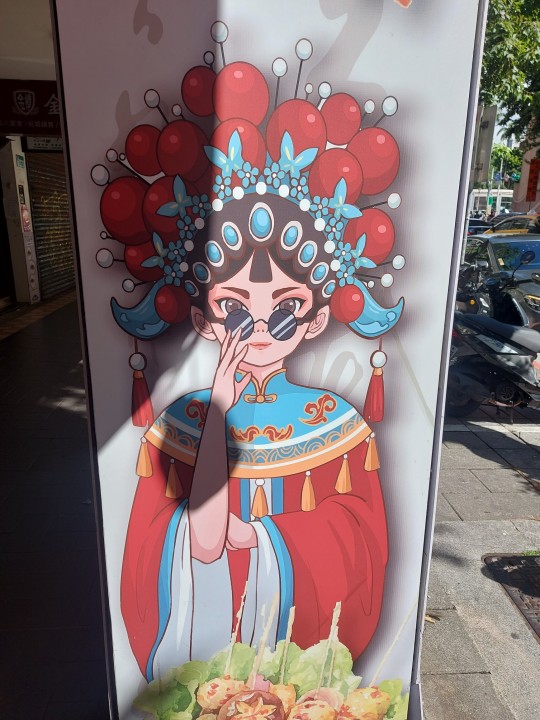
I saw this cute poster for a restaurant while running around my neighborhood in Taipei. I figured fans of Chinese fashion might like it.
#chinese fashion#chinese clothing#historical clothing#art reference#graphic design#chinese opera#opera fashion#Opera clothing#sunglasses
50 notes
·
View notes
Text
I always though "oh it's because of China" is an easy scapegoat for people to jump to when it comes to lgbt erasure rather than considering the more complicated combination of 'reasons', but it's especially weird to see people do this over an anime thing. Considering the history between Japan and China. Maybe a little too complicated for you, maybe not your lane.
21 notes
·
View notes
Text
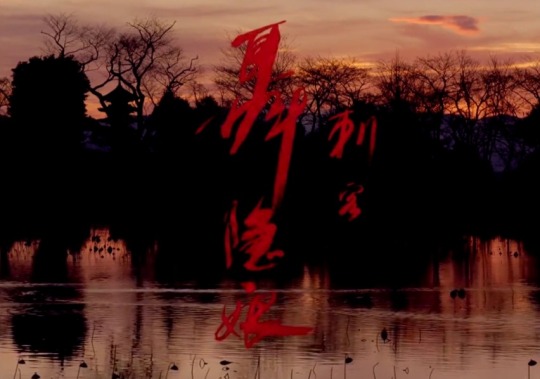
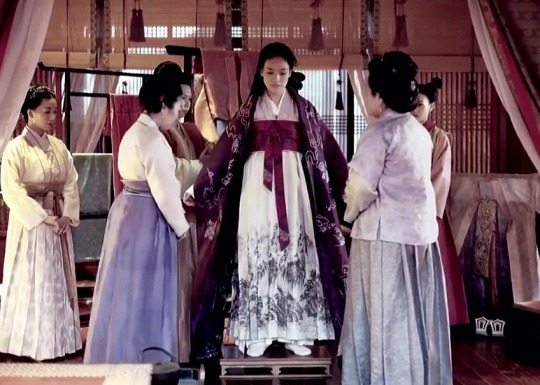
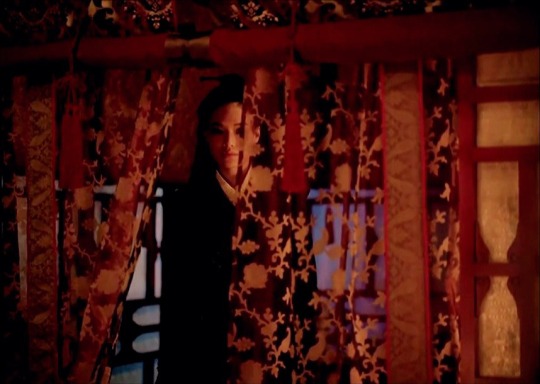
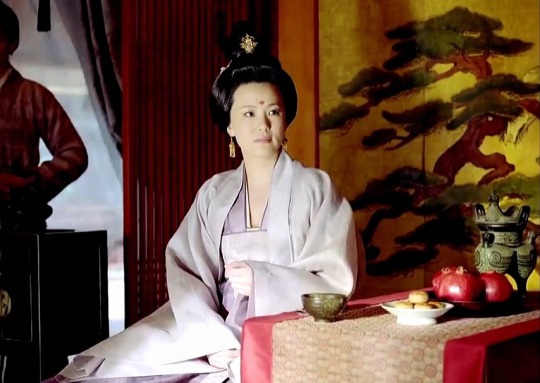
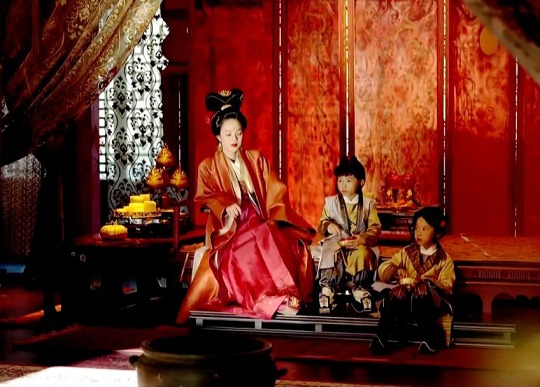


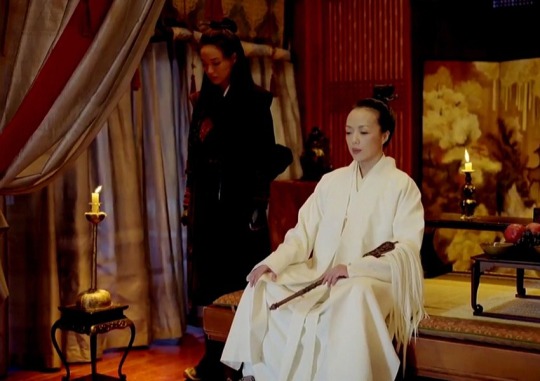
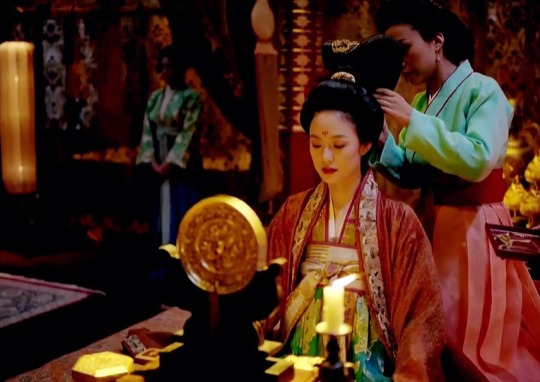

The Assassin (2015) is a wuxia drama in aspect ratio 1.85.
"It was like being transported into a Chinese classical painting."
#china#perioddramaedit#filmedit#the assassin 2015#ancient china#historical drama#wuxia#female warriors#hanfu#chinese fashion#chinese costumes#asian fashion#asian movie#chinese movie#imperial china#taiwanese movie#asian costumes#asian women#wuxia movie#chinese clothes#movie aesthetic#female warrior#cinematography a+#period drama#my edit#luxury#aesthetic#asian aesthetic
76 notes
·
View notes
Note
hi! do you have any information on how hanfu were traditionally washed and stored? thank you :)
First, sorry that it has been so long. Then, sorry that it is a short answer. Hope it is alright.
Expensive clothes were not washed. In the old days they used a lot of plant dyes and those things discoloured when they came in contact with water. Modern plant dyes are slightly better due to the fixative used in dying but the colour still faded with every wash. Hence, people in the old days used to wear layers to avoid dirtied their fancy clothes with sweat.
Clothes can be scented with something called 熏笼/Xūnlóng (lit. "smoke cage").

It is usually made from bamboo, but rich people could have them made from porcelain, like this one from the Three Kingdoms period.

A book on incense from the Song dynasty, 洪氏香谱/Hóng shì xiāngpǔ (Hong's Book of Fragrance), recorded the method of scenting clothes: first placed a bowl of hot water to moisturize the clothes, then smoke the clothes with incense.
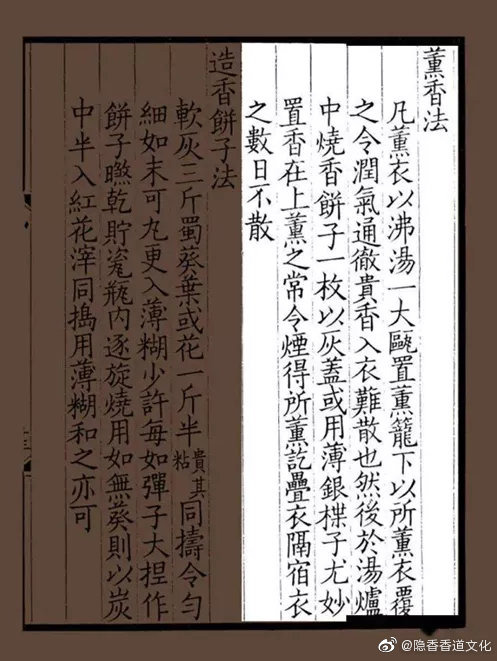
Sometimes clothes could be washed separately.
护领/Hùlǐng (lit. "Collar protector". They are usually white in colour) were often detachable so people only needed to wash that instead of the whole clothes. It could also be made from paper.
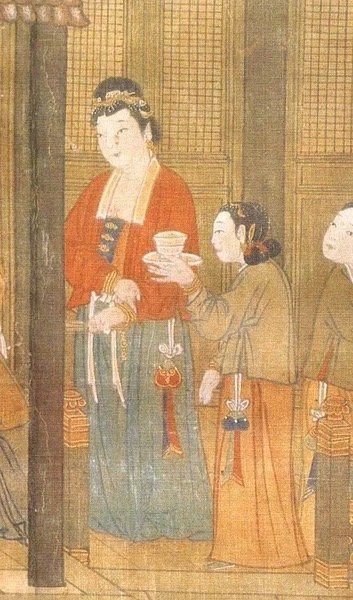
Those type of embroidered/painted collars from Song dynasty were attached separately, so it was possible that they were removed while the body of the clothes were washed separately.
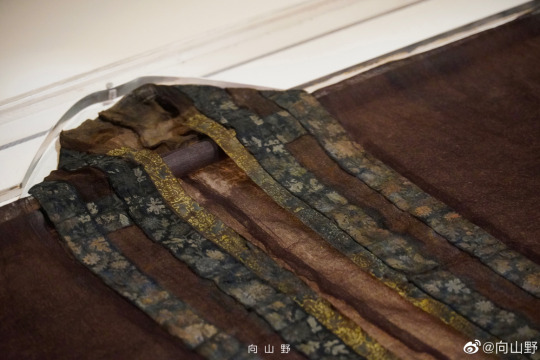
People usually washed clothes in water with the aid of a 捣衣杵/dǎoyī chǔ or 洗衣杵/xǐyī chǔ 搓衣板/cuō yī bǎn wash stick and/or a washboard.
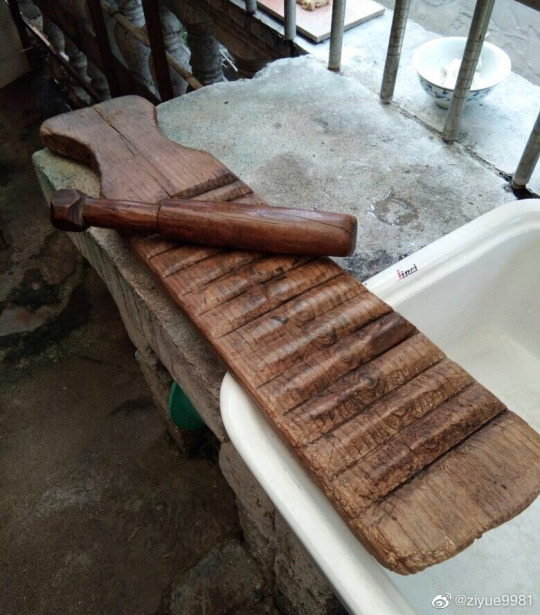
The earliest type of of soap recorded being used was 草木灰/cǎomù huī (wood ash). Other plant based soaps were also used, such as 皂荚/zàojiá (Gleditsia sinensis, black locust), 无患子/wúhuànzi (Sapindus saponaria, soapberries), 茶箍/chágū(the dregs from pressing oil from camellia seeds plus hay) etc.
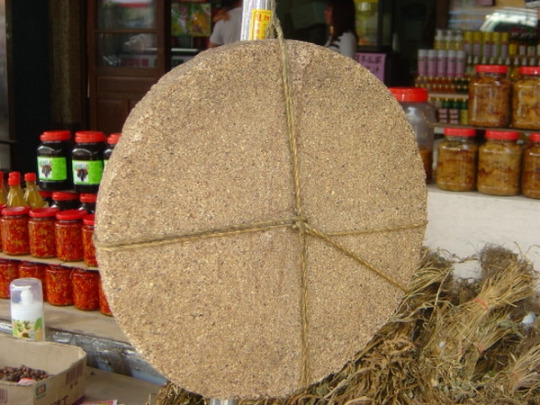
There were also records of potassium soap. Those soaps however were usually in liquid form and often used in fabric manufacture [我国古代的洗涤剂].
猪胰子/Zhū yízi Pig pancreas was also used. 白国斌/Bái Guóbīn (in 2021) wrote how they made pig pancreas soap when he was young - pasted the pig pancreas, then dried and powdered it. Later mix with alkaline water and made into ball to air dry.
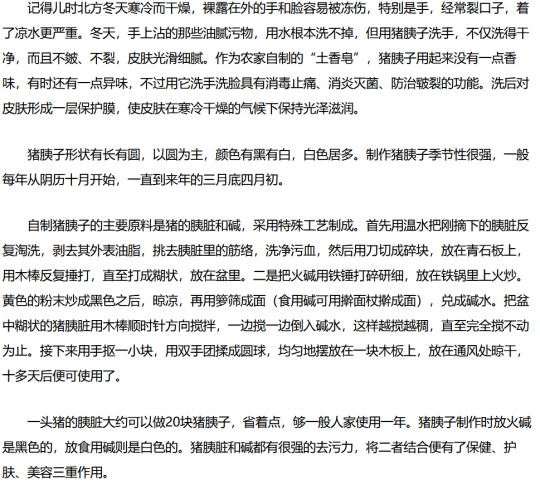
澡豆/Zǎodòu was made from the combination of powdered pig pancreas, bean powder and other herbs. There are many recipes, such as a recipe by 孙思邈/Sūn Sīmiǎo from Tang dynasty includes 16 materials. They were also known as 胰子/Yízi.
Aromatic herbs and other xiang (fragrant things) could also be added into the water in the end to add pleasant fragrance to the clothes, such as a book in Ming dynasty《多能鄙事》/Duō néng bǐ shì ("I can do a lot of humble things") by 刘基/Liú jī recorded: Tree Peony Bark 31.25g and Spikenard 3.125g, powdered.
#chinese history#hanfu#china#historical clothing#laundry#fouryearsofshades#long post#my ask box is finally cleared#i am free
857 notes
·
View notes
Text
[Hanfu · 漢服]Chinese Tang Dynasty(618–907AD)Traditional Clothing Hanfu Based On Dunhuang Mural
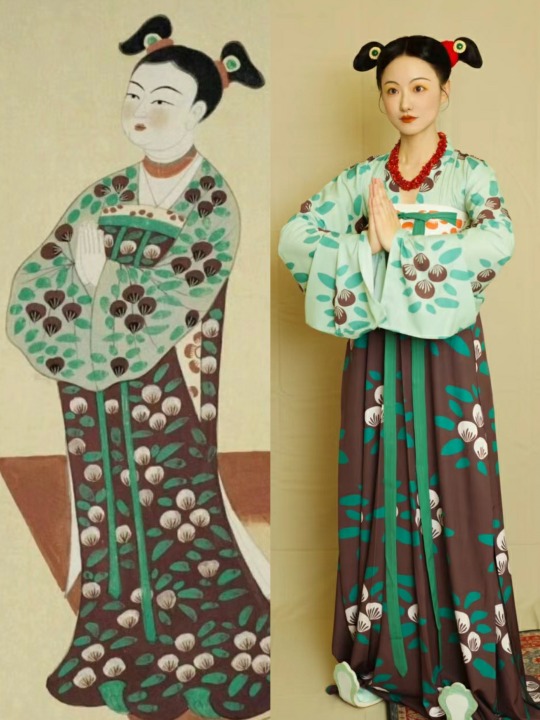

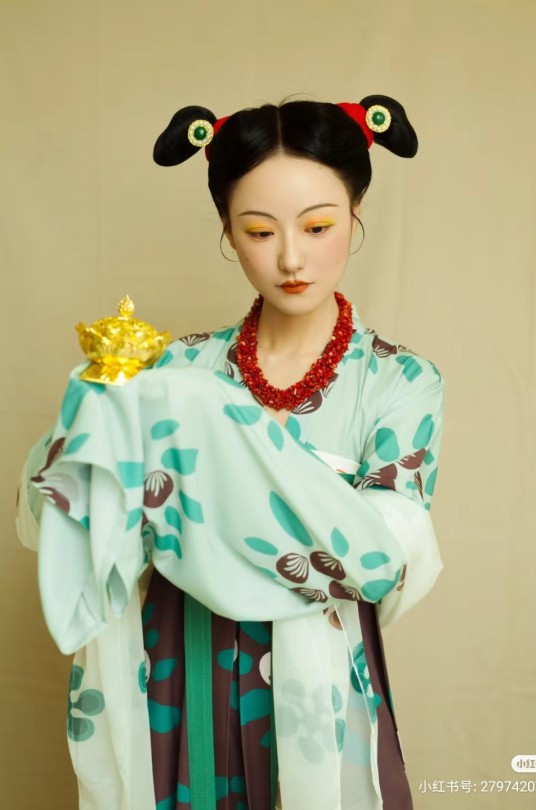
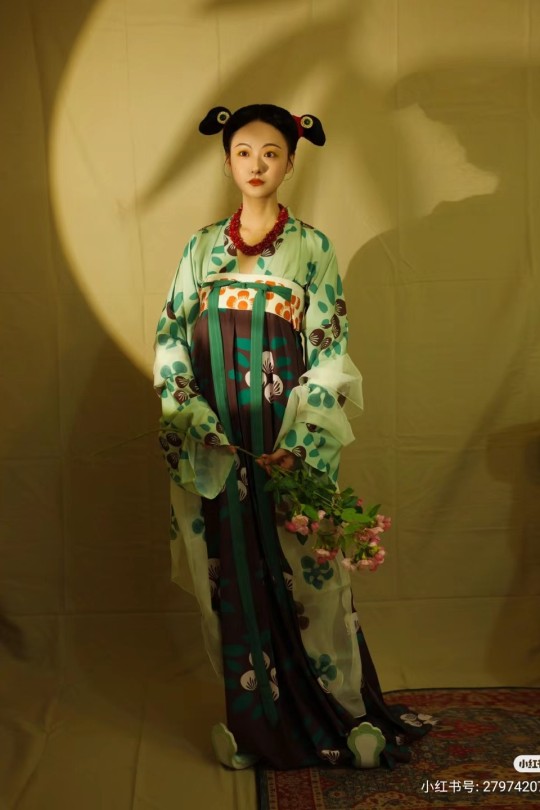

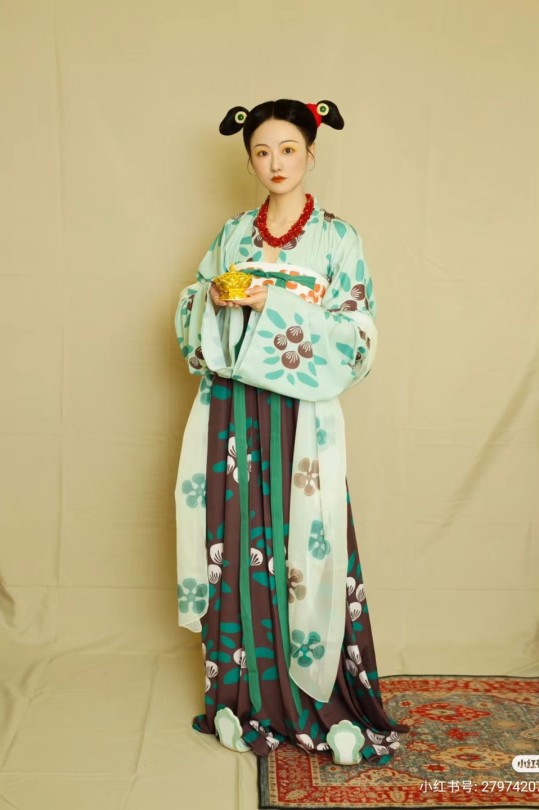

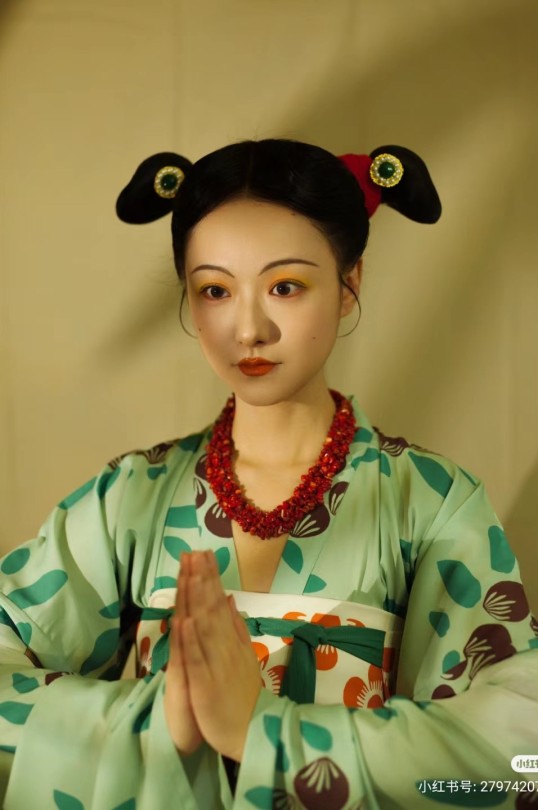


【Historical Artifacts Reference 】:
▶Woman Donor at Murals in Cave 114 of Mogao Grottoes in Dunhuang China

————————
📸Photo:@摄影师梁咩咩
👗Hanfu: 青泠谷
🧚🏻Model&💄Stylist:@张小花
Post-production: @张小花
🔗Weibo:http://xhslink.com/XzpEhG
————————
#chinese hanfu#Tang Dynasty(618–907AD)#hanfu#hanfu accessories#hanfu_challenge#chinese traditional clothing#china#chinese#hanfu history#漢服#汉服#中華風#china history#historical fashion#history
204 notes
·
View notes
Text
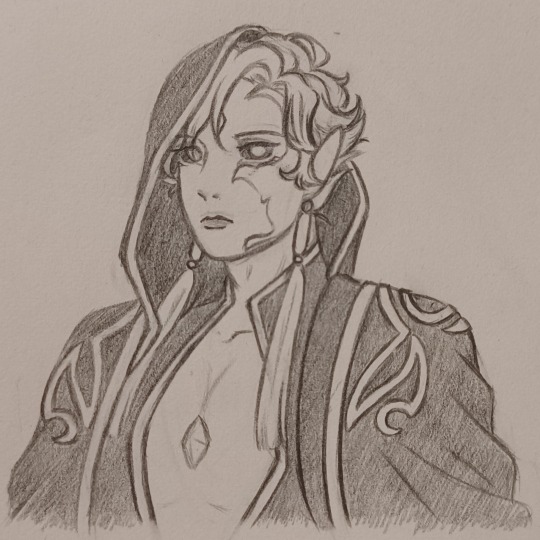
quick no ones looking post dungeon master tango as a villain character from a p2w mmo no one on this site has ever heard of ever
#mcyt#hermitcraft#hermitblr#tangotek#yes im cringe . no im not changing that#tango is quickly becoming one of my go to guys for warm ups like#not even kidding when i say i just fuck around with his hair style in my sketch book all the time#something about the scrungliness ig#also if you recognize this design 1. no you dont and 2. please come talk to me about this chinese p2w mmorpg#this shit used to be my hyperfixation not even kidding . the aesthetics of wuxia mobile games compells me in ways i cant explain#also my hanfu hyperfixation is back . this game doesnt even do actual proper traditional chinese clothes#the fits are all traditional chinese clothing inspired hanfu so theyre not like . historically accurate at all#can you tell im going nuts#anyways anyone that kmows this game please talk to me i miss it so much#im gonna start posting art more often now that the bad news have stopped coming#still recovering from that tho . so well see how much i can actually post#anyways im writing all these tags at 4am of the day after my birthday gonna go collpase now goodbye
55 notes
·
View notes
Photo

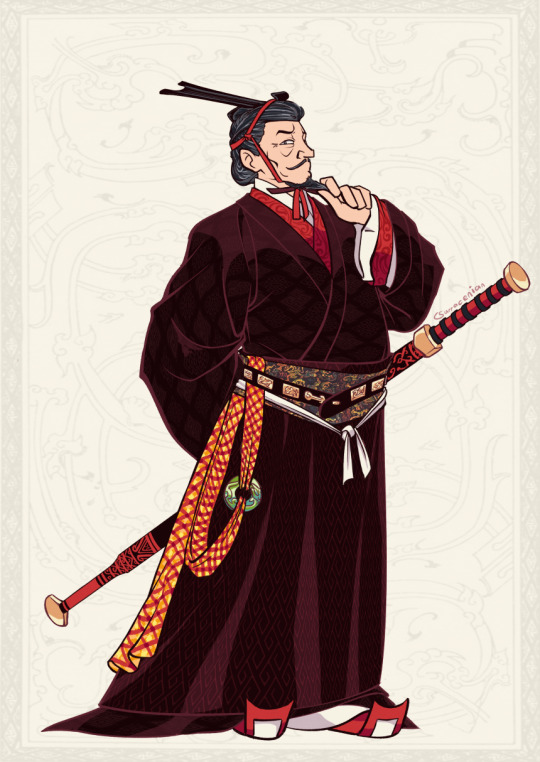
Qin & Han Dynasty Imperials
Contrary to popular belief, Chinese emperors and others in the imperial family would not have worn the more famous ceremonial Mianfu-robes during the Qin and much of Han Dynasty, but the more comparatively austere "Jūnxuán"(袀玄), which was a Qin invention, because they weren't into the Zhou-Etiquette informed Mianfu, as Qin Kingdom then later Empire dedicated its state philosophy to Hanfeizi's Legalism.
Which basically means Every Single Popular Depiction Of Qin Shihuang and Emperor Wu of Han you've likely seen are actually wrong hahaha
(You can read more of the history from my patreon here!)

(references used, more detailed in the patreon post)
#hanfu#chinese history#ancient china#han dynasty#qin dynasty#汉代#秦#historical fashion#chinese clothing
57 notes
·
View notes
Text
#TwoForTuesday on #TextileTuesday:
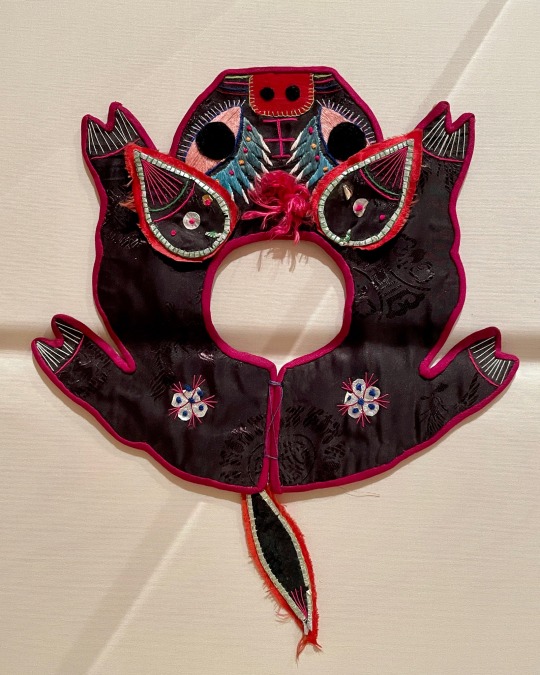


Two children's collars
China, 1901-50
Pig: silk & cotton embroidery w/ appliqué
Bats: silk & cotton embroidery
On display at The George Washington University Textile Museum’s new animal-themed textiles exhibit.
>Infant mortality was high in pre-modern China, so families dressed their children in clothing with propitious motifs thought to repel evil and attract good fortune. Since a child's head was thought to be a particularly vulnerable area of their body, hats and collars often featured auspicious imagery.
The four-lobed collar depicts bats. In Mandarin Chinese, "bat" is pronounced "bianfú," the second character of which is a homophone for "good fortune," so bats symbolize blessings and happiness. The other collar is in the shape of a pig.
An important food source and one of the twelve animals of the zodiac, pigs symbolize prosperity and good luck.<
#animals in art#pig#bat#Chinese art#East Asian art#Asian art#textiles#clothing#children’s clothing#historical costume#collar#George Washington University Textile Museum#museum visit#exhibiton#Textile Tuesday#Two for Tuesday#embroidery
230 notes
·
View notes